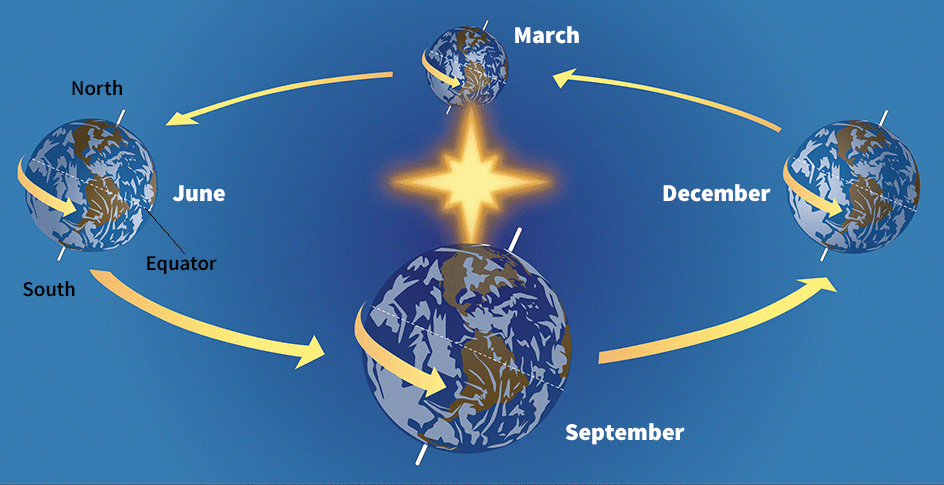December Solstice Marks a Change of Seasons
Dec. 22, 2011
The arrival of the December solstice has marked the official start of winter in the Northern Hemisphere and of summer in the Southern Hemisphere. At the December solstice, the sun reaches its southernmost position on the horizon. At that point, Earth is tilted on its axis as far away from the sun as possible. The axis, the imaginary line around which Earth rotates, is not straight up and down but is tilted by about 23 degrees 7 minutes in relation to the plane of the planet’s orbit around the sun. In the Northern Hemisphere, the December solstice, also known there as the winter solstice, is the shortest day and longest night of the year. In the Southern Hemisphere, the December solstice, also known there as the summer solstice, is the longest day and shortest night of the year.
The solstice officially occurred at 5:30 Coordinated Universal Time (UTC) on Thursday, December 22, at the prime meridian at the Royal Greenwich Observatory in Greenwich, England. In the United States, 5:30 UTC was 12:30 a.m. in New York City (Eastern Standard Time) on Thursday and 9:30 p.m. in Los Angeles (Pacific Standard Time) on Wednesday, December 21. In Sydney, Australia, the December solstice began at 4:30 p.m. (Australian Eastern Daylight Time) on December 22.

The seasons change because the tilt of Earth's axis causes places on the planet to receive different amounts of sunlight during the year. Winter begins in the North Hemisphere when the North Pole has its greatest tilt away from the sun (right). At the same time, summer begins in the Southern Hemisphere, which has its greatest slant toward the sun. World Book illustration by Amie Zorn, Artisan-Chicago
The December solstice is one of two solstices that take place as Earth completes a full orbit of the sun. The June solstice occurs on June 20, 21, or 22, when the sun reaches its northernmost point on the horizon. It marks the start of summer in the Northern Hemisphere and the start of winter in the Southern Hemisphere.
As they have since prehistoric times, solstice celebrations were held in many places around the world. In the Northern Hemisphere, the December solstice has had particular significance as the day on which the sun is reborn and days begin to grow longer.
Additional World Book articles:
- Cahokia: Mysteries in the Mounds (a Special Report)
- Inca (Religion)
- Newgrange
- Reading the Sky: Early Places of Astronomy (a Special Report)
- Stonehenge


